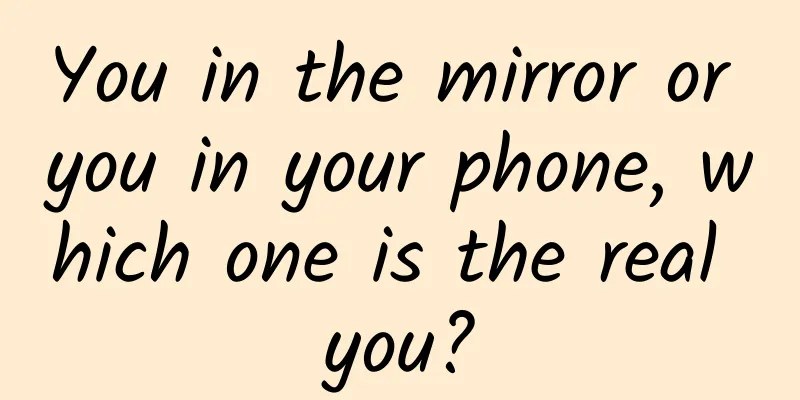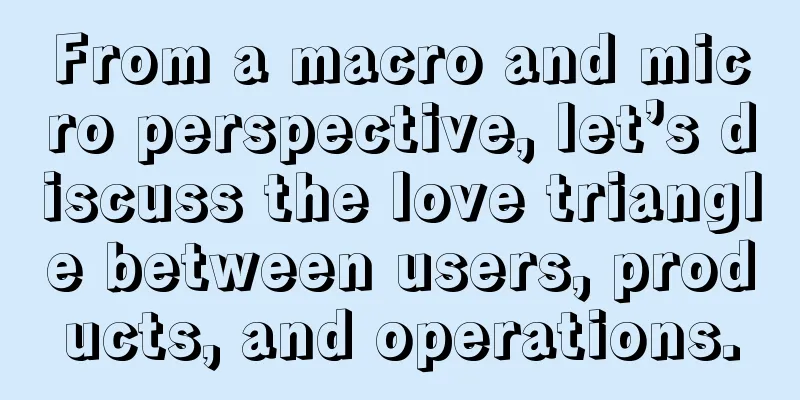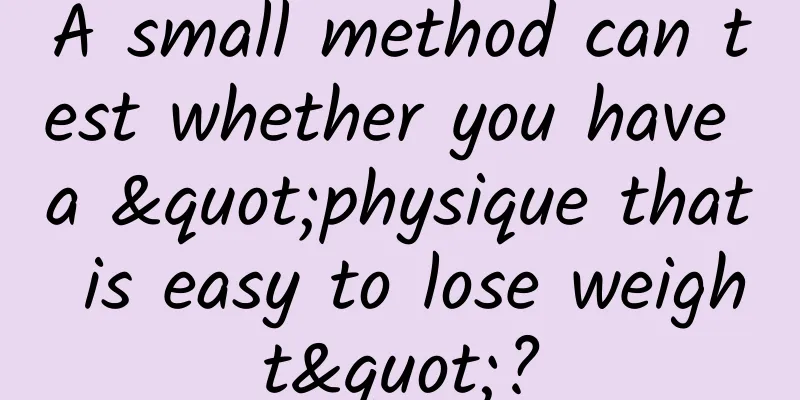You in the mirror or you in your phone, which one is the real you?

|
Mirror, mirror, tell me, who is the most beautiful woman in the world? When you wake up in the morning, the first thing you do is ask yourself in the mirror: Is this you? When you stand in front of the mirror and admire yourself calmly, do you feel extremely beautiful? However, when you look at yourself in your ID card, you are so ugly that you doubt your life. Then you take a selfie with your bestie and find that you are back to your peak appearance in your phone! Is it a bit confusing all of a sudden? Which one is the real me? ! Who is "deceiving" our eyes? The authenticity of you in the mirror : five stars Before going out, in order to check your makeup, you stand in front of a flat dressing mirror, showing your body and mind happily, and your various postures are diffusely reflected on the flat mirror. The reflected light and the incident light are separated on both sides of the normal line. The three are on the same plane, and the reflection angle is equal to the incident angle. Your beautiful image instantly forms a virtual image of equal size and distance . So, the you in the mirror is relatively real, but what you see may be different from what others see. This is related to the "exposure effect" in psychology. Simply put, you are very familiar with yourself in the mirror, and your brain will automatically ignore the imperfections, which makes you mistakenly think that the person in the mirror is incomparably beautiful... However, from the perspective of imaging alone, the you reflected in the mirror is still relatively real. What about the photo captured by the camera? Reality of you in the camera : Four stars The camera uses one or more concave lenses and convex lenses to form a lens group, which converges the light and corrects the aberrations that affect the restoration of the real scene, such as light spots, blur, and deformation, to obtain clear and bright photos. As shown in the figure below, the imaging principle of the camera imitates the imaging law of the human eye. Therefore , the camera lens has become the main reason that affects the realism of the image . The lens is a device that transmits the scene to the sensor to form an image. It is equivalent to the "eye" of the camera. It is usually composed of several lenses. When the light signal passes through, the lenses will filter out stray light (infrared rays, etc.) layer by layer. Therefore, the more lenses there are, the more realistic the image will be. Schematic diagram of digital camera structure At the same time, in order to make the photos as authentic as possible, people generally use standard lenses. This is because telephoto lenses compress space, so that people or objects at different distances from the camera are pressed on the same plane; and wide-angle lenses will cause exaggerated deformation of human faces and produce lens distortion. Standard lenses are the closest to the effect of human eyes, but there is still a certain gap between the photos taken with them and what the human eye sees. The impact of different focal lengths on portrait photos The wide-angle lens on the left distorts the facial expression How authentic you are in your phone : one to four stars Although professional photographers still use digital SLR cameras such as Nikon and Canon, small-sized, high-pixel mobile phones are becoming increasingly popular. The working principle of mobile phone cameras is roughly the same as that of digital cameras, but there are still some differences in the imaging effect. What is the difference between a mobile phone lens and a professional lens? The focal length and zoom of mobile phone imaging are probably the biggest differences from camera lenses. Mobile phone zoom is through digital magnification, and the perspective relationship of the image will not change as the subject is enlarged or reduced. Camera lens zoom will change the perspective relationship of the subject, and in terms of image clarity, the zoom of the camera lens does not affect the resolution of the image, while the zoom of the mobile phone will lose resolution. In addition, the depth of field effect (degree of blur) that appears when shooting in portrait mode on most mobile phones is based on algorithms, not optical principles, and is naturally not as realistic as that captured by a camera. Although with the development of technology, some mobile phones have begun to use optical zoom, the emergence of beauty cameras has greatly reduced the authenticity of photos, and more and more "photo frauds" have appeared. Therefore, the authenticity of you in beauty phones can only be one star at most, no more. Fat Tiger before and after beautification Reality of you in the camera : four stars Compared with photos , images are much more real . The camera captures you in motion. The photographer can use tools such as tracks and jibs to shoot you in all directions at 360 degrees, reflecting your expressions and movements at every moment. Compared with photos, images are like flowing fragments of time. More importantly, when shooting, because the characters are in a specific environment, they will interact with various elements in the environment or undergo psychological changes, so the image can be captured in detail through changes in the lens. For example, when you shoot a person running, the image can capture the person's muscle shaking, the face gradually sweating under the sun, and the frowning brows, which makes you look more "real" in the image. For example, the energetic look of the dancing grandfather in the picture below appears very real in the dynamic image. Of course, when we watch movies through the screen, the realism of people and objects in the movie will also be affected by the screen ratio and resolution. The higher the resolution, the clearer and more realistic the picture. In addition to the influence of professional equipment, shooting angle, lighting, location scheduling, etc. will all affect the "realism". For example, when taking photos, photographers usually choose a time when the sun is 45 degrees to the ground (this angle is somehow familiar...), that is, when the sun is rising or setting, because during this time period, the sun usually shines obliquely on the earth, and the diffuse light shines on the objects, adding richness to the light and shadow. If it is the midday sun, it is direct, and all the scenery has no layers. The impact of light and shadow changes on facial vision To sum up! Magic Mirror has the answer: Excluding psychological factors and external objective conditions, the mirror shows the truest you. The dynamic image has been processed by art, but it is basically true. The photo varies depending on the device... When we take ID photos, facing the "close-up" lens of the camera, you will be photographed before you have time to put on your expression. But don't worry too much, you will definitely look better in the eyes of others than the "stupefied" you on the ID card~ |
<<: If you don't want to get colon cancer, don't fall in love with this delicacy
>>: A shell is not a shell, left and right are always relative
Recommend
A top-secret sharing class of a certain media star: the most powerful Douyin live broadcast monetization, practical skills
A top-secret sharing class of a certain media sta...
Zhou Hongyi: 9 classic Internet marketing cases, how did these big guys defeat their opponents?
TOP9 How Baidu impressed users in its early days ...
4 Challenges of Metaverse Marketing for Brands
The Metaverse has remained popular since its laun...
Facebook advertising tips!
There seem to be many reasons why Facebook reject...
Are pop-ups in software annoying? You have to be honest now
The Cyberspace Administration of China, the Minis...
Attention! There are changes to the working hours this week, and an important reminder →
Today (May 4th) is the first day of rework on May...
Bluepill: LinkedIn's open source iOS parallel UI testing tool
[[182653]] Not long ago, LinkedIn introduced the ...
NIO recalls ES8, subsidies disappear, what is the future of new energy vehicles?
After several spontaneous combustion incidents, N...
The Expendables 8.7 Tutorial on how to automatically create a Douyin account on your iPhone! Easily help you solve the problem! 7
The Expendables 8.7 Tutorial on Automatic Account...
Beware! Falling has become the number one killer of the elderly. How to prevent it is the key?
Elderly falls, a seemingly trivial matter, actual...
Inventory | 30 essential refined operation tools for marketing, operations, and products
Through refined operations , tapping into the con...
How to design new product invitation activities to promote products themselves (Part 2)
This article is a summary of the results of a use...
How to share good things on Douyin? How to make money by sharing good things on Douyin?
1. What should I do if the traffic for sharing goo...
Pay attention to brain health and prevent dementia, please eat more of these foods
Author: Sun Taixin, Chief Physician, Beijing Elec...
Huang Yu, Operations Director of Didi: Didi’s Operational Strategy
1. How to subsidize? What is the purpose of the s...









